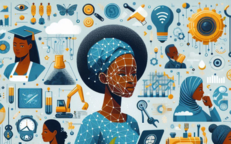What is really at stake when we are talking about infrastructure investment in Africa?

Almost every time I interact with Development Finance Institutions (DFIs) or the private sector interested in financing infrastructure projects in Africa, I hear about the lack of investable projects, or that the projects are not well-prepared, leading to the conclusion that ‘it’s difficult to find bankable projects’ from the portfolios received from governments.
Interestingly enough, governments keep asking us, “What exactly are these well-prepared projects?”
The straightforward answer would be, “It’s when the risk/return profile of the projects is good enough to convince someone to invest their money in such projects for implementation.” That’s a well-prepared project.
Many meetings, investment roundtables, etc., are constantly being organized to reflect, talk, and commit towards the search for that ‘good enough’ project profile.
From my modest experience in this topic, I observe that sometimes we tend to miss the real point about the concept of bankability.
For instance, in an attempt to help countries improve project profiles, I led a process of standardizing early project definitions of infrastructure projects under the Programme for Infrastructure Development in Africa (PIDA).
We benchmarked DFI requirements and project evaluation methodologies and developed a “quality label “for excellence in early-stage project preparation (identification, prioritization, need assessment, project definition, etc.). We looked at factors ranging from political commitment around the projects, to the legal and regulatory setups in the project sector, up to the projects’ technical and financial readiness. More importantly we allocated big weighting for Private sector interest and PPP attractiveness profile of the projects. We closed the process with a climate risk mitigation and adaptation dimensions on top of those criteria.
Our expectation is to feed development finance providers and potential investors with projects that they can comfortably take to the next level of bankability.
Was this enough to build enough pipelines of so-called well-prepared projects? No, because even after working with governments to clear the necessary upstream work, detailed studies require a lot of funds. There is a crucial funding gap for midstream project preparation, a huge gap, leading us to often get stuck at the pre-feasibility stage for ever.
Now let’s come back to what is at stake.
As a Statistician-Economist, I tend to put microeconomic issues into the macro spectrum and project the situation in the longer term. The solutions that emerge from this approach are generally the most robust and credible.
For infrastructure development on the continent, the reality we know and face daily is low access to electricity and drinking water for millions of our fellow Africans, and billions in trade losses due to poor logistics networks and transport infrastructure, etc.
What we also know is that Africa will have 2.5 billion people in 2050, that some countries on this continent see their population double every 18 years, and that hundreds of millions of young people enter the job market every year.
These are real public policy matters; they are about people’s lives.
Can we truly afford the luxury of taking 15 years to complete feasibility studies of a road so that it can be bankable, then take another five years to reach its financial close?
Should we continue the discussion on the hydroelectric potential of the continent, moving from one investor roundtable to another, only to hear that such a project is not bankable?
The answer is no. We can’t, we shouldn’t.
A former Nigerian Minister and former Director of the country’s Bureau of Public Enterprises, Malam Nasir El-Rufai , convincingly said, “On whatever terms, at whatever price, I will build power stations and ask questions after the electricity is delivered.”
Fundamentally, financing development is not about short-term and short-sighted profitability. It’s about building a stable world where everyone will have the opportunity to contribute to its betterment.
Here are the most pressing matters for the continent:
Build roads and bridges to connect people and markets.
Harness, sustainably, all necessary existing resources to generate and provide affordable and reliable energy for businesses, universities, hospitals, and industrial parks.
Break barriers for digital inclusion in the most remote areas of the continent.
When we do this, the profits will flow; and those courageous and visionary enough to invest their cents into this will recover their money with great returns. Plus, they would have contributed greatly to the world’s prosperity.
And that is what is at stake. And that’s our focus, join us.
AUDA-NEPAD encourages freedom of speech and the expression of diverse views. The views of columnists/guest bloggers published on Habari are therefore their own and do not necessarily represent the views of AUDA-NEPAD.


